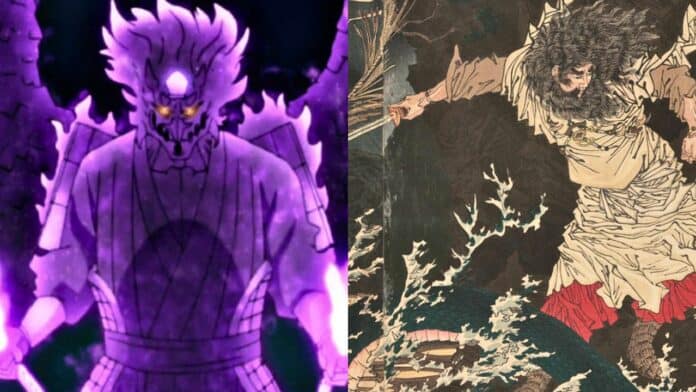“Naruto,” the renowned manga and anime series created by Masashi Kishimoto, is deeply rooted in Japanese culture and mythology.
While the series is celebrated for its unique characters and intricate plot, a significant aspect of its appeal lies in how it incorporates elements of Japanese mythology.
This article explores the influence of Japanese mythology on “Naruto,” examining how these elements are woven into the series to enrich its narrative and world-building.
Jinchuriki and Japanese Folklore
One of the most prominent incorporations of Japanese mythology in “Naruto” is the concept of Jinchuriki, individuals who have tailed beasts sealed within them. This concept is reminiscent of the Shinto belief in kami (spirits) inhabiting physical entities.
The tailed beasts in “Naruto,” with their immense power and spiritual significance, draw parallels to the spirits found in Japanese folklore, embodying natural forces and elements.
The Sharingan and Traditional Beliefs
The Sharingan, a unique eye ability possessed by members of the Uchiha clan, bears resemblance to the concept of the “evil eye” found in various cultures, including Japanese folklore.
In addition, the design of the Sharingan is similar to the Tomoe symbol, which is associated with Japanese deities and represents the play of moving forces.
Characters Inspired by Mythological Figures
Several characters in “Naruto” are inspired by figures from Japanese mythology. For instance, Orochimaru, known for his pursuit of immortality and ability to shed his skin, shares characteristics with the legendary snake Yamata no Orochi.
The character Jiraiya, with his ability to summon toads, is directly named after a folklore character from the Japanese folktale “The Tale of the Gallant Jiraiya.”
Susanoo and Amaterasu
The Uchiha clan’s techniques, Susanoo and Amaterasu, are directly borrowed from Japanese mythology. Susanoo, the god of the sea and storms, and Amaterasu, the sun goddess, are important deities in Shinto religion.
The abilities in “Naruto” named after these deities reflect their mythological counterparts’ attributes, with Amaterasu involving unquenchable black flames and Susanoo being a massive, ethereal warrior.
The Sage of Six Paths
The character of the Sage of Six Paths, who plays a crucial role in the series’ mythology, is inspired by Buddhist and Shinto traditions.
His role as the originator of ninja techniques and the one who sealed away the Ten-Tails mirrors the role of cultural heroes and deities in mythology who shape the world and impart wisdom to humanity.
The Influence on World-Building
Japanese mythology significantly influences the world-building in “Naruto.” From the architecture and clothing to the societal structures and rituals, elements of traditional Japanese culture and mythology are evident.
This incorporation adds a layer of authenticity and depth to the series’ setting, providing a rich backdrop for the narrative.
The integration of Japanese mythology in “Naruto” is a testament to the series’ cultural depth. By weaving these mythological elements into the fabric of its story, “Naruto” not only pays homage to Japanese culture but also enriches its own narrative, making it more engaging and multidimensional.
While the series primarily focuses on its unique storyline and characters, its subtle yet impactful use of mythology adds to the overall depth and complexity of the series, offering viewers a glimpse into Japanese folklore and tradition.
Also Read: The cultural impact of Naruto on anime

